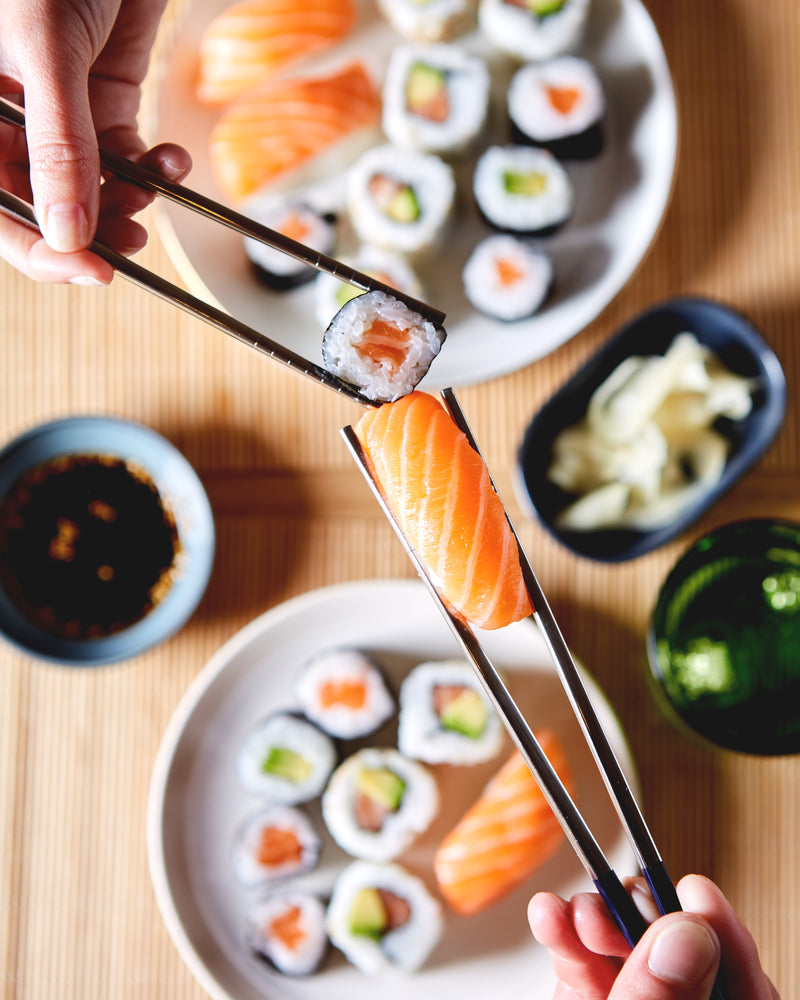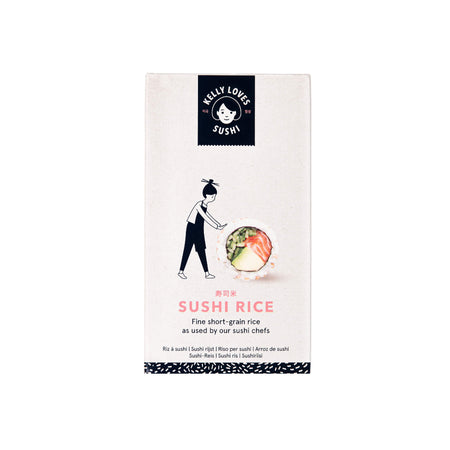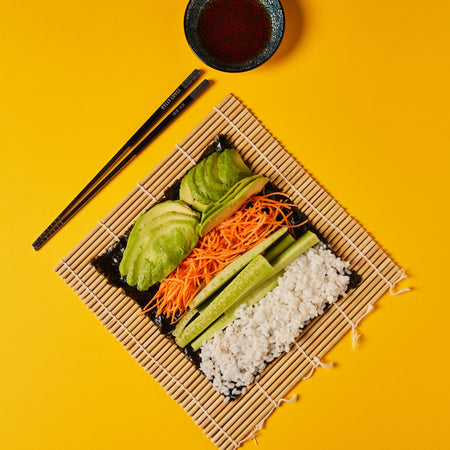The different types of sushi explained

Before we run down the different types of sushi, we need to rewind: what is sushi?
Sushi primarily uses vinegared ‘sushi rice’, vegetables and fish (raw and cooked). Additional garnishes include: soy sauce, pickled ginger and wasabi. ‘Sushi’ was first used to describe fermented rice and salted fish dishes in Asia. In Japan, this was common until the Edo period. After the Edo period, sushi became hand-rolled ‘edomae zushi’ which is similar to the sushi we recognise today.
Sushi restaurants offer fresh seafood, but sushi is also a familiar sight in supermarkets, chains of coffee shops and even petrol stations for people on the go. We’re used to seeing neat little packs of rice circles and rectangles, usually with a mini fish-shaped bottle of soy sauce and a mini packet of ginger (which can be impossibly fiddly to get out!).
For the freshest, most authentic sushi in a supermarket, find out where your nearest Sushi Daily is, and watch our sushi artisans handcraft sushi to perfection, ready for you to pop into your shopping basket. Then there is homemade sushi, which will always be extra special, as it gives you the fun and freedom to experiment with different ingredients.
What are the different types of sushi?
When you’re sitting in a sushi restaurant where sushi is going past on a conveyor belt or sushi train (kaitenzushi), it can be hard to tell the different types apart, let alone recognise the different names of the sushi. If it’s your first time at a sushi conveyor belt, you’ll probably panic-grab. But as soon as you take a bite, you’ll recognise the difference. It’s fun to try new types of sushi and different combinations, but it’s also satisfying to find your favourites and to have a go at making them at home.
Nigiri sushi
Nigiri is a rectangular mound of rice, usually topped with slices of raw fish, but it can be cooked with butterflied prawns or egg. The word nigiri comes from the Japanese nigirizushi, which translates as ‘hand-pressed sushi’. The topping sticks to the rice due to the sticky texture of the rice, but sometimes there is a little dab of wasabi between the rice and the topping. The rectangular shape allows for this sushi to be picked up and eaten with your hands.
Maki
Maki is probably the most common sushi and the one you will see the most, alongside nigiri. Maki is made in rolls and sliced into circular, bite-size pieces. The seaweed (nori) wraps up the vegetables, fish and other ingredients into the roll. The outside of the roll is sometimes sprinkled with sesame seeds.
Uramaki
Uramaki: the inside-out sushi roll! This is a roll similar to Maki, but with uramaki, the rice is on the outside of the nori rather than the inside. The nori is wrapped around the filling. As the outside of the uramaki is rice, it’s really easy to coat it in tasty toppings such as crispy onions or black sesame seeds – or a spicy sauce.
Temaki
Temaki, also known as a hand roll, is a large cone made from nori and filled to the brim with delicious sushi fillings such as rice, vegetables and fish. Temaki fits into your hand perfectly, so you can eat it much like you’d hold and eat a wrap or burrito. For a sushi fan, this is a delicious way to make the most out of bigger mouthfuls of fresh ingredients.
Chirashi
Chirashi means ‘scattered,’ so in this context, ‘scattered sushi’. The brightly coloured chirashi sushi is a traditional style of sushi often served on happy occasions and at parties. It consists of a bowl or tub of sushi rice topped with raw slices of fish (usually a surprise choice from the chef) and different garnishes.
There are two types of chirashi sushi:
- Sashimi on top of sushi rice. This is what you’ll get when you order chirashi sushi in a restaurant. The dish was first served in the early 1900s in Edo (current Tokyo area). Do try it next time you’re in a sushi restaurant.
- Sushi oke containing chirashi sushi. This dish is served on a large wooden platter for special occasions. The ingredients are all mixed together and then topped with sushi rice. It’s usually vegetarian, sometimes with prawns, but never with raw fish.
Sashimi
Sashimi isn’t actually a type of sushi, but we’re including it here as it will often be eaten in a sushi restaurant. Sashimi is raw fish, cut into moist, succulent rectangular slices known as hira-zukuri. The word sashimi loosely translates to ‘pierced body’.
For those who love raw fish, it’s truly delicious. Fish and seafood are the most common ingredients for sashimi, but some chefs use raw meats such as beef. Preparing sashimi properly needs excellent knife skills as the cut of the fish determines the differences in flavour. Sashimi is usually served with soy sauce, wasabi and pickled ginger.
When you visit a sushi restaurant, you’ll see all the different types of sushi clearly on the menu and exquisitely presented to you. It’s an art form the chef will take pride in and will have trained many years for.
When you make sushi at home, it’ll definitely take some practice, but it doesn’t matter: you don’t have to be perfect with the sushi roll design. It’ll still taste delicious if the ingredients are high quality and fresh. Have some fun practising and experimenting and eating the results — however messy they look!
For more information on how to eat all these different types of sushi and sashimi, check out our beginner’s guide to sushi.








